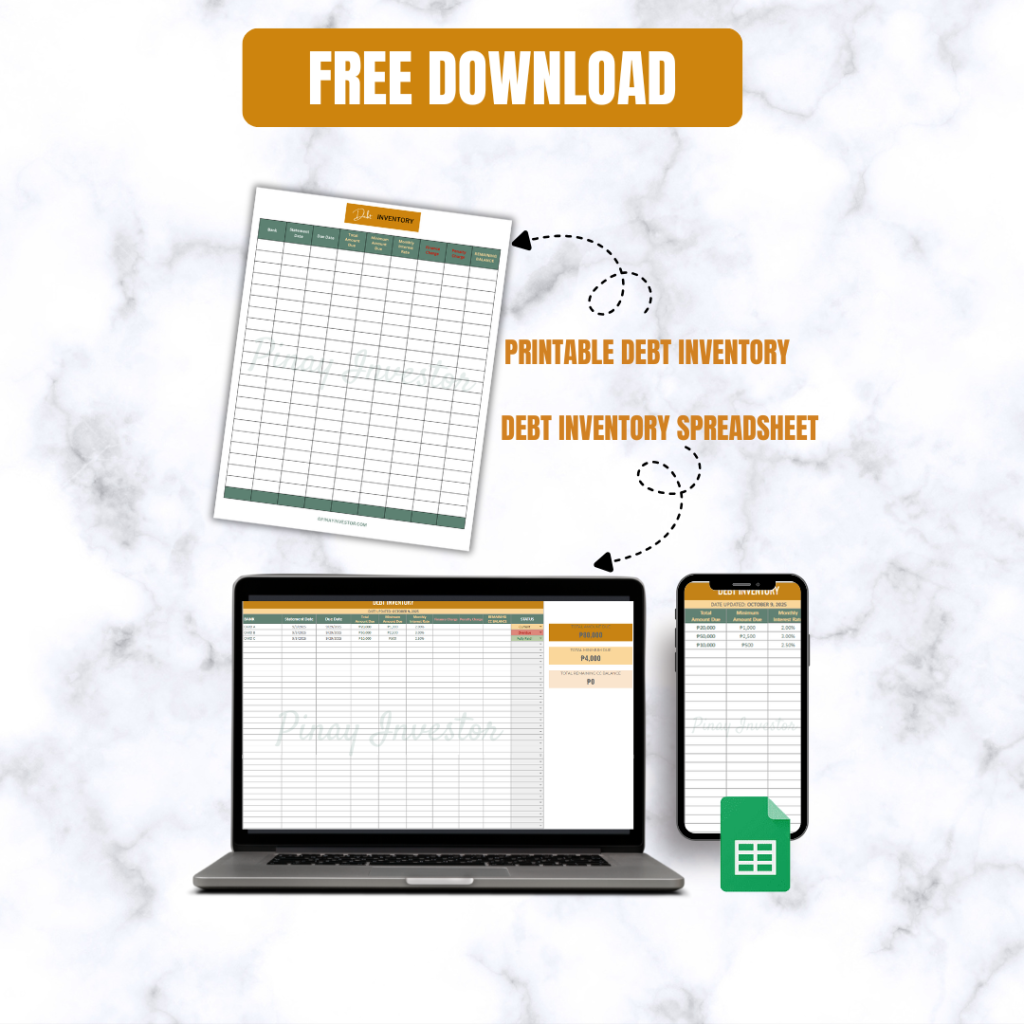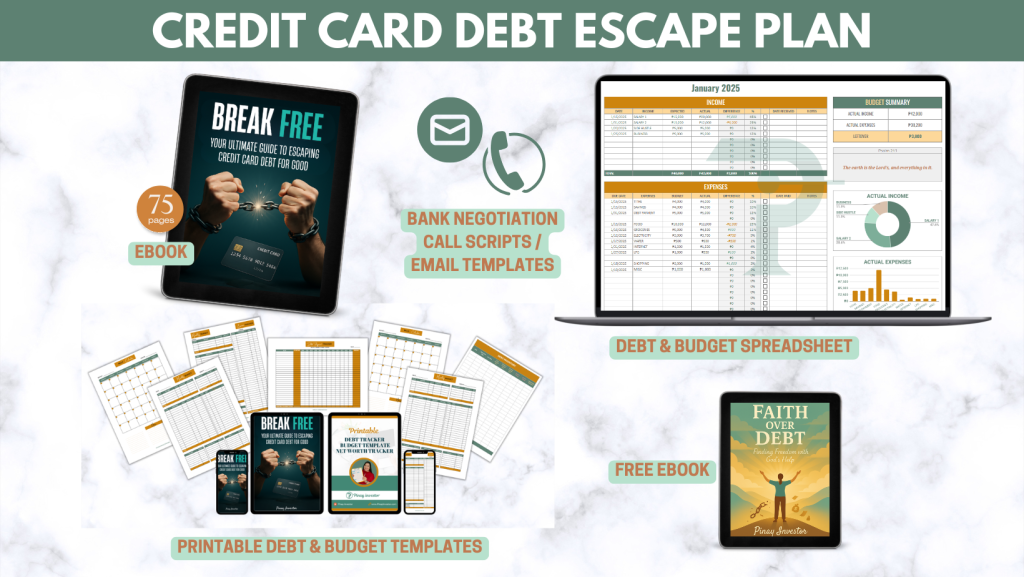It starts with one simple text: “Congratulations! We’ve increased your credit limit.”
You didn’t ask for it. You didn’t even need it.
But suddenly, your card feels more powerful. You feel a little richer, a little more secure, maybe even a little proud.
That’s exactly how credit cards are designed to work. The “congratulations” feels like a reward—but it’s actually an invitation to spend more. Each increase quietly expands the amount you can borrow, and with it, the amount of interest you’ll pay later.
In the Philippines, this illusion of control is becoming dangerous. Recent data reported by the Business Inquirer shows that credit card debt has reached “critical risk levels,” with balances growing faster than any other type of consumer loan.
More Filipinos are relying on their cards just to get by, and many are paying only the minimum each month, hoping that consistency means progress.
But that minimum payment is a trap. It gives you short-term relief while keeping you in long-term debt. You pay month after month, yet the balance barely moves.
If that sounds familiar, you’re not alone. This guide will show you why your credit limit isn’t really your money, how banks use psychology to keep you swiping, and what you can do to finally take back control of your finances and peace of mind.
The Hidden Truth About Credit Card Debt in the Philippines
Credit cards can be helpful tools. They make online payments easy, give you rewards, and even cover you during emergencies. But for many Filipinos, they’ve become a quiet source of stress.
Every month, thousands of cardholders pay the minimum amount due thinking they’re being responsible. What most don’t realize is that banks designed the minimum due to keep them paying interest longer.
When you only pay 5% of your balance, the remaining 95% continues to grow with interest—up to 36% per year. That’s why you feel like you’re paying but never making progress. The truth is, the system works exactly as intended: the longer you owe, the more banks earn.
How the Minimum Due Trap Works

Imagine you owe ₱30,000 on your card with a 3% monthly interest rate.
Your minimum due is ₱1,500 (5% of ₱30,000).
You pay ₱1,500 every month, on time, thinking you’re being diligent.
But out of that ₱1,500, about ₱900 goes to interest and only ₱600 goes to your actual balance.
After one year, you’ve already paid ₱18,000—but your remaining balance is still around ₱24,000. You didn’t even use the card again, yet you’re still trapped.
This is what I call the treadmill effect. You’re running hard but staying in the same place.
And if you keep using the card for “just small things,” the treadmill only speeds up.
Why the “Credit Limit” Feels Like Real Money
Banks know how to make spending feel safe. When you get a higher credit limit, it feels like success. It feels like a raise.
But that limit isn’t part of your savings or salary—it’s your borrowing power. The bigger it is, the bigger your potential debt.
You might think: “At least may available credit pa ako.” But in reality, that’s not extra income; it’s future interest waiting to happen.
Here’s a simple way to reframe it:
| What You See | What It Really Means |
|---|---|
| “Congratulations! We’ve increased your limit.” | “You can now borrow—and owe—more.” |
| “You’re eligible for another 0% installment.” | “We’ll earn from you longer, just slower.” |
| “Minimum due: ₱1,200 only.” | “You’ll keep paying interest for years.” |
Once you see it for what it is, you start treating your credit card as a tool—not as a sign of success or safety.
The Emotional Side of Debt: When “Deserve Ko ’To” Backfires
Money decisions aren’t always logical. Sometimes we swipe out of exhaustion, guilt, or love for family.
We tell ourselves, “Deserve ko ’to.”
And that’s okay. You do deserve rest, joy, and reward.
But if the “reward” comes with months of interest, it stops being self-care. It becomes self-sabotage in disguise.
A ₱1,000 treat can easily cost ₱1,300 with interest if unpaid. Multiply that over several months, and it’s no longer just milk tea or dinner—it’s your peace of mind on a tab.
How to Start Taking Back Control
If you feel stuck right now, don’t lose hope. You don’t have to solve everything overnight. What matters is that you start moving—one clear, honest step at a time.
1. Face your numbers.
Avoiding your statements doesn’t erase them.
List all your cards, balances, interest rates, and due dates.
To make this easier, download my free Debt Inventory Tracker here.
This simple sheet helps you see the full picture—your first real step toward clarity and control.
2. Stop adding new debt.
It’s tempting to swipe for small “needs,” especially during tight weeks. But the key to progress is freezing new debt while you’re fixing old ones.
Use cash or debit for daily expenses. Treat your credit card like cash—swipe only what you can pay in full next month.
3. Choose a payoff method that fits you.
You don’t need to be perfect; you just need a plan.
Two proven methods are the Snowball Method (start with your smallest balance) and the Avalanche Method (target the highest interest first).
Both work if you stay consistent. Even ₱500 extra per month helps.
In my ebook, Break Free: Your Ultimate Guide to Escaping Credit Card Debt for Good, I break down 13 strategies—including practical options like balance conversion, restructuring, and settlement—for every situation.
4. Talk to your bank before they talk to you.
If you’re behind, don’t hide. Contact your bank and ask about programs that can lower your interest or stretch your payment term.
Some may offer balance transfer promos with lower rates, or restructuring for overdue accounts. One honest conversation can stop the calls and give you breathing room.
5. Build a small safety net.
Most people fall back into debt because of emergencies.
Start with ₱50 a day or whatever you can. That’s ₱1,500 a month—enough to handle small surprises without reaching for the card again.
Call it your Freedom Fund. Because every peso saved today is one less borrowed tomorrow.
From Debt Stress to Financial Peace
Credit card debt isn’t just about numbers—it’s about emotions.
It’s the worry you feel every payday, the guilt after every swipe, and the fear of answering unknown numbers.
But freedom starts the moment you stop hiding. When you finally face the numbers, the fear begins to lose power.
That’s why I wrote Break Free: Your Ultimate Guide to Escaping Credit Card Debt for Good.
It’s not another “money tips” book. It’s a roadmap for real people, with real bills, families, and stories.
Inside, you’ll learn:
-
Why debt feels so hard to escape (and how to break the cycle)
-
13 debt strategies that fit different budgets and situations
-
How to talk to collectors confidently (with sample call scripts)
-
How to rebuild your savings and stay debt-free for life
You don’t need to figure everything out alone. You just need a guide, a system, and a bit of faith that things can change.
Final Thoughts
Your credit limit is not your money. But your discipline, courage, and hope—that’s yours.
Start by seeing the truth about how the system works. Then use that awareness as your weapon to protect your hard-earned income.
Download your free Debt Inventory Tracker and take your first brave step today. Because the sooner you face your numbers, the sooner you take back control.
And if you’re ready for the next step, get your copy of Break Free: Your Ultimate Guide to Escaping Credit Card Debt for Good
It’s time to stop surviving—and finally start living free.



